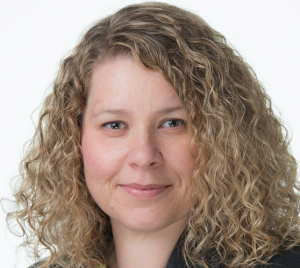As Valorie Crooks and her research team were developing maps to show COVID-19 risks in neighborhoods across British Columbia, she knew the information was too urgent to wait on an academic journal to disseminate.
Instead, the geography professor from Simon Fraser University in Canada took the data she and her research colleagues, which included patient partners, gathered to create an interactive website with the maps that they shared publicly.
“The need for information right now is so critical, that it just does not align with the timelines of scientific publishing,” Crooks says. “So, we went for a public leap of faith and shared our maps.”
The response has been substantial from both the media and the public. The open access strategy has prompted feedback from the public that’s helped researchers refine their work and provided useful information to policymakers as they respond to the crisis.
The models for identifying COVID-19 risks in neighborhoods were based on data sources from the Canadian census and publicly available address information the team gathered from various online listings. The researchers considered several reasons that make some people more likely to contract the virus related to socio-economic factors, occupational hazards, and personal behavior.
Living in crowded households, working in high-risk industries, and using public transit were among the characteristics analyzed. Those factors were combined with a neighborhood’s density of restaurants, long-term care beds, homeless shelters, prisons, schools and other activities that could impact vulnerability.
These maps were intended to provide important new insights about how to manage the pandemic and where efforts should be focused.
On December 24, the university put out a press release about the public maps, not knowing what to expect with media uptake. But with new variants coming on the scene and growing concern about a holiday surge with people traveling, it turned out to be a critical moment.
“The response was really overwhelming,” Crooks says. “We were flooded both with media requests, as well as all kinds of fascinating, thoughtful questions and comments from people who had seen the maps.”
The curiosity of the public gave Crooks a platform to explain the science on a live television news spot, radio shows, and for print publications. Information was reshared on social media and talk about the project spread to a broad audience. Rather than put all the technical details on the website, the material was deliberately user-friendly and Crooks simply put her email address at the bottom for people to reach out if they had questions.
“We’ve had very successful public engagement with this work,” Crooks says. “The same level of information has gone to everybody. It was an effective strategy.”
Next, the researchers are writing up an article about the mapping project to submit to a journal for publication.
“It’s been interesting to kind of flip the normal process,” Crooks says. “At the same time, I had a gut feeling that the project was ready to go and share.”
Crooks has long been a huge advocate of open access publishing, but this was the time she saw the potential to lead a project of her own using open practices.
“This project has really reminded me of the value of academics in sharing publicly our information and insights to inform decision making and policy,” says Crooks, adding that the media blitz results in some op-eds on related open science and open access. “It’s been a real whirlwind. It’s shaped my thinking and refined my messaging about my work. That’s something we can lose sight of as researchers and scientists.”
Next, Crooks and her research team are working on a model that looks at the long-term health effects of the pandemic and is planning to use the same kind of open approach as they did with the COVID-19 risk maps.
SFU recently published a tip sheet on producing open maps, using Crooks’ project as an example. Researchers in other part of Canada are interested in replicating the work elsewhere in the country.
Crooks’ research was supported by a COVID-19 Rapid Response Grant awarded by the Michael Smith Foundation for Health Research and some additional funding from the BC SUPPORT Unit.
